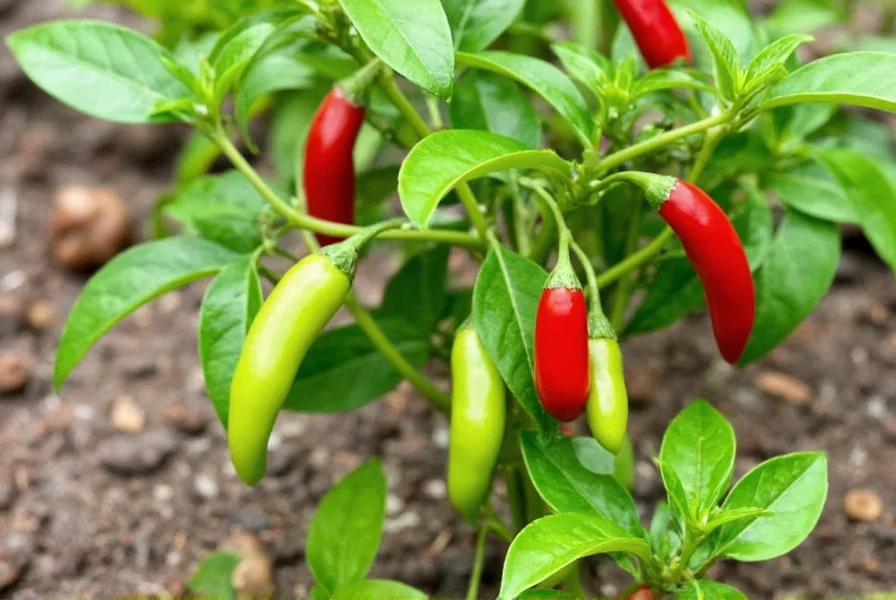Fresno chili peppers represent one of the most versatile ingredients in American and Mexican cuisine. Understanding their unique characteristics helps home cooks and professional chefs maximize their culinary potential. Unlike many specialty peppers, Fresnos maintain consistent availability in most grocery stores year-round, making them accessible for everyday cooking.
Understanding Fresno Chili Characteristics
When examining fresno chili peppers vs jalapeno, several distinguishing features become apparent. While both peppers share similar size and shape (typically 2-3 inches long), Fresnos have thinner walls and a more tapered shape. The most reliable visual identifier is their smooth, glossy skin compared to jalapeños' slightly wrinkled texture.

The heat level of Fresno chilies ranges from 2,500 to 10,000 Scoville Heat Units (SHU), placing them firmly in the medium category. For context, this makes them slightly milder than average jalapeños (which range 2,500-8,000 SHU) but significantly hotter than poblano peppers (1,000-2,000 SHU). The heat concentrates in the seeds and inner membranes, so removing these reduces spiciness substantially.
| Pepper Type | Scoville Heat Units | Flavor Profile |
|---|---|---|
| Green Fresno | 2,500-5,000 | Grassy, bright, slightly tangy |
| Red Fresno | 5,000-10,000 | Fruity, berry notes, complex |
| Jalapeño | 2,500-8,000 | Grassy, vegetal, straightforward heat |
| Serrano | 10,000-23,000 | Sharp, intense heat, citrus notes |
The biochemical transformation during ripening explains Fresno peppers' unique flavor progression. Research from New Mexico State University's Chile Pepper Institute shows that as Fresnos mature from green to red, they undergo significant shifts in volatile compounds: decreasing 2-isobutyl-3-methoxypyrazine (grassy notes) and increasing linalool and methyl anthranilate (berry notes), directly impacting culinary applications (source: https://chilepepperinstitute.org/research/).
Fresno peppers have a defined historical evolution. Developed in the 1950s by plant breeder Clarence Brown at New Mexico State University as a cross between jalapeño and serrano varieties, they were named after Fresno, California—a major agricultural region though not their origin. Commercial adoption accelerated in the 1980s with Southwestern cuisine's rise, and consistent year-round availability emerged through greenhouse cultivation advancements documented by University of California Agriculture and Natural Resources (source: https://anrcatalog.ucanr.edu/pdf/8715.pdf).
Culinary Applications and Best Uses
Limitations and Contextual Boundaries
Despite versatility, Fresnos have specific constraints. Their thin walls make them unsuitable for stuffing applications requiring structural integrity (unlike poblanos). Prolonged cooking beyond 20 minutes causes significant degradation of heat compounds and flavor volatiles, limiting effectiveness in long-simmered dishes. Gardeners in regions with summer temperatures above 90°F (32°C) experience reduced yields, as Fresnos thrive in 65-85°F climates. Texas A&M AgriLife Extension notes higher susceptibility to shriveling during storage compared to thicker-walled varieties, requiring precise humidity control (source: https://aggie-horticulture.tamu.edu/vegetable/varieties/chile-pepper-varieties/).
Knowing how hot are fresno chili peppers helps determine their best culinary applications. Their moderate heat and complex flavor make them ideal for dishes where you want noticeable but not overwhelming spice. Chefs particularly value red Fresnos for their vibrant color and developed fruitiness.
For authentic fresno red chili peppers uses, consider these applications:
- Salsas and pico de gallo - Their crisp texture holds up well in fresh preparations
- Creamy sauces - Blends beautifully with dairy to create balanced spicy sauces
- Pickling - Maintains crunch and develops complex flavors in vinegar-based solutions
- Garnishes - Thin slices add color and subtle heat to finished dishes
- Roasted applications - Develops deeper, smoky-sweet notes when charred
When substituting in recipes, understanding best substitutes for fresno chilis proves valuable. Jalapeños work in a pinch but lack the fruitiness. For closer flavor matches, serranos provide similar heat with more citrus notes, while gochugaru (Korean red pepper flakes) offers comparable fruitiness with less direct heat.
Growing and Selecting Fresnos
For gardeners interested in growing fresno chili peppers at home, these plants thrive in warm climates with full sun exposure. They typically mature in 70-80 days from transplanting, producing abundant yields when properly cared for. Unlike some specialty peppers, Fresnos adapt well to container gardening, making them accessible for urban growers.

When selecting Fresnos at the market, look for firm, glossy peppers without wrinkles or soft spots. Green Fresnos should be uniformly bright green, while red varieties display deep, vibrant coloration. Avoid peppers with brown spots or signs of shriveling, which indicate age and reduced quality.
Storage and Preservation Techniques
Proper storage extends the shelf life of Fresnos significantly. Keep unwashed peppers in the crisper drawer of your refrigerator for up to three weeks. For longer preservation, consider these methods:
- Freezing - Chop and freeze in airtight containers for 6-8 months
- Pickling - Creates shelf-stable preserves lasting 1-2 years
- Drying - String and air-dry or use a dehydrator for concentrated flavor
- Roasting and freezing - Char, peel, and freeze for ready-to-use flavor bases











 浙公网安备
33010002000092号
浙公网安备
33010002000092号 浙B2-20120091-4
浙B2-20120091-4